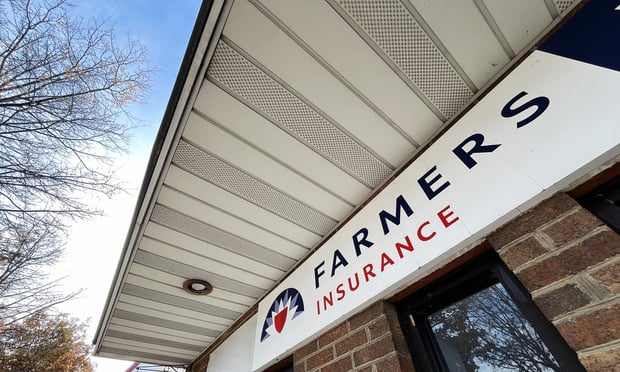 When a catastrophe occurs, it elevates the need for absolute precision. Insurance companies must exercise oversight when developing precise, comprehensive strategies that will enable them to meet policyholders' needs and demands while keeping various costs in check.
When a catastrophe occurs, it elevates the need for absolute precision. Insurance companies must exercise oversight when developing precise, comprehensive strategies that will enable them to meet policyholders' needs and demands while keeping various costs in check.
After all, there is perhaps no greater opportunity to reinforce the value of coverage, as well as having the insurer as an ally and resource. In order to make good on its promise to customers (both contractually and implied), an insurer must quickly deploy individuals and teams that possess the appropriate knowledge to accurately assess damages and apply skills and logic to, at times, improvise because no storm or situation is identical or necessarily predictable.
Until Hurricane Irene, a fierce storm bound for that particular large metropolitan area would have seemed a remote possibility. That was before Irene conjured up mass evacuations and more than a billion dollars in damages, especially to inland homes and not as much to coastal properties. Although Manhattan and other areas dodged the proverbial bullet, Irene nevertheless left millions without power for nearly a week and created insured loss between $1.5 and $2.8 billion, according to Eqecat's estimates at press time.
Depending on an insurance carrier's size and how many policyholders may have suffered damage from Irene, additional resources may have been necessary. This is in reference to carriers enlisting the help of partners like independent adjusting companies, mitigation contractors, housing vendors, and contents vendors, among others.
Unassuming Allies
Although a carrier may not have given salvage much thought in their CAT planning and recovery strategy, it definitely behooves them to identify the movers and shakers that can sift through a deluge of mangled cars. It would seem that relatively little has been written about a rather large source of recouping insurer revenue. In terms of assessing vehicle damage, how does the adjuster entering a scene begin to determine which car belongs to each policyholder? What about in the event of a tornado, when a vehicle may have been expelled hundreds of miles away?
Russell Lowy, COO at Copart, has some answers. His company employs nearly 2,000 transporters throughout the United States and can relocate wrecked and/or damaged vehicles into one of its 137 facilities. Aside from helping communities and policyholders resume some semblance of business as usual, this type of service can significantly impact customer retention. Moving Parts
“An insurer would hire us to move an affected vehicle out of place that would normally charge a daily fee, such as an impound lot,” Lowy explained. “A car would have been towed following a wreck and declared a total loss. We would then move the vehicle to a facility that is secure with managed inventory where claim estimators can enter a safe environment in which to survey damages. The owners of the vehicles can also come to retrieve personal effects while settling the claim with the adjuster assigned to the case.
“Once the vehicle claim has been settled, we can then capture the title and documents from policyholder and convert to a sellable title, depending upon various factors.”
Ostensibly, a provider such as Copart liquidates damaged vehicles for the insurer to then recoup some of the money it has paid as a result of the claim. Copart specifically uses a proprietary online auction called VB2.
“Where eBay ends, VB2 begins because it is truly a live auction,” Lowy said. “It is like attending a live auction, through two separate models for bidding.”
The issue of salvage underscores the importance of meticulous CAT planning as a whole.
“CAT support takes to whole new level,” Lowy explained. “When dealing with the devastation from Katrina , we dealt with the removal of hundreds of thousands of flooded vehicles bogging down streets and neighborhoods. Somebody has to deal with the vehicles scattered about the city streets and parking lots.”
Copart uses custom technology to identify vehicles insured by the carriers that enlist its services. The company also employs its mobile CAT response unit to facilitate communication between carriers and their insureds at times, including the tornadoes in Joplin this past spring.

Salvaging Communities
 “Our work in the Joplin area shows how we operate in areas so devastated by weather events that there is really nothing around remotely resembling cars or dwelling,” Lowy said. “Upon arrival, we find land immediately and open up operations with mobile CAT unit. Being up and running so quickly enables us to help the city with its clean up. That involves coordinating efforts with local officials, the police department, and others.
“Our work in the Joplin area shows how we operate in areas so devastated by weather events that there is really nothing around remotely resembling cars or dwelling,” Lowy said. “Upon arrival, we find land immediately and open up operations with mobile CAT unit. Being up and running so quickly enables us to help the city with its clean up. That involves coordinating efforts with local officials, the police department, and others.
“Often they are happy to see us because we can help them establish normalcy and clear the path to maintain local revenue.”
When scouting a salvage/auction facilitator, insurers need to select a provider with a substantial buyer base established. Copart's platform, for instance, reaches well over 150 countries.
“Our advantage is speed, as in removing damaged vehicles and moving along the liquidation process to set all parties involved for success,” Lowy said.
In fact, insurers can possibly incorporate lessons from Copart in their own CAT planning protocols. Copart has a team of 36 members that are hand-selected to serve on its CAT team, which is ready to be deployed a virtually any moment. Much like claims adjusters, these employees may work erratic hours depending on the demands of each loss, sometimes missing vacations or foregoing weekends.
This particular team adheres to a playbook of sorts, Lowy said. The playbook contains different disaster scenarios with which employees familiarize themselves. In addition to the CAT team, employees working at one of Copart's 137 facilities know ahead of time what to prepare for, in terms of fueling equipment and having generators ready.
There is a sense of community at the company, as all departments work together to carry out a cohesive vision, all the way down to human resources.
“We have a detailed evacuation plan and updated phone tree,” Lowy said. “We make sure that our own folks are safe. For example, in the wake of Ike, we had contingencies in the program and would buy trailers and bedding and equipment to support our staff there, even lining up a campground type of environment to house employees until hotels opened up.
After the storm has come, passed, and the carnage has been cleaned up, there is time for reflection and improvement so the next deployment can go even more smoothly. Copart's CAT coordinators are involved, and part of their job post-catastrophe is to review performance and recommend new procedures.
“I can't stress planning enough,” Lowy said. There are two critical pieces: The first is the 'what ifs.' What if there is no fuel for adjusters to fill their cars to inspect the damaged vehicles? Also, the 'who' and 'how' play into the equation. Who will lead the team? What is their function when they get there? Do they know the ground? How will they perform if there is no power?”
A qualified salvage specialist can lower expenses and certainly help with that miscellaneous debris left by the storm.
Want to continue reading?
Become a Free PropertyCasualty360 Digital Reader
Your access to unlimited PropertyCasualty360 content isn’t changing.
Once you are an ALM digital member, you’ll receive:
- Breaking insurance news and analysis, on-site and via our newsletters and custom alerts
- Weekly Insurance Speak podcast featuring exclusive interviews with industry leaders
- Educational webcasts, white papers, and ebooks from industry thought leaders
- Critical converage of the employee benefits and financial advisory markets on our other ALM sites, BenefitsPRO and ThinkAdvisor
Already have an account? Sign In Now
© 2024 ALM Global, LLC, All Rights Reserved. Request academic re-use from www.copyright.com. All other uses, submit a request to [email protected]. For more information visit Asset & Logo Licensing.








